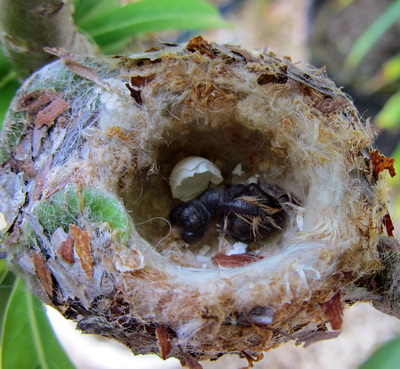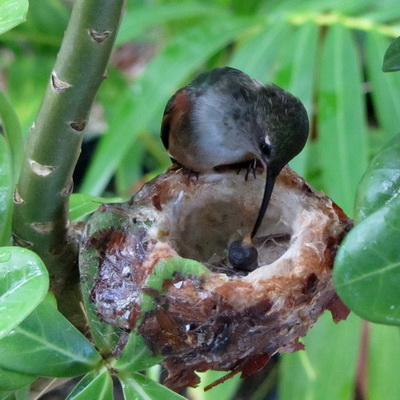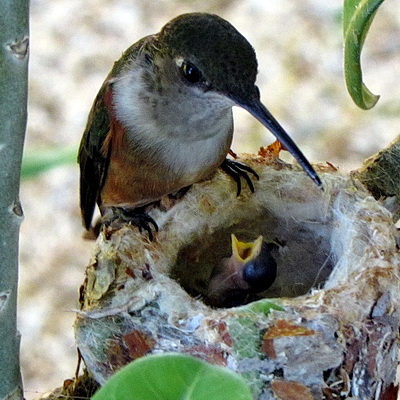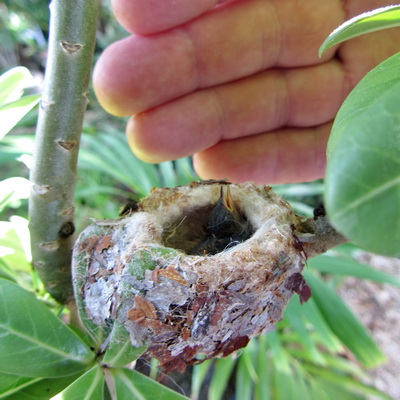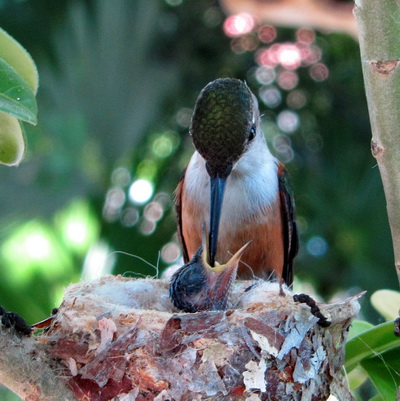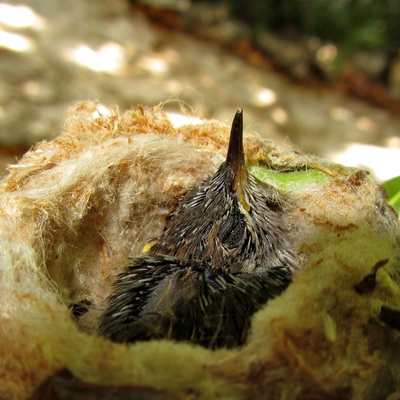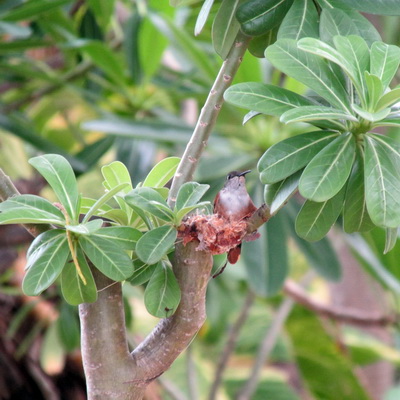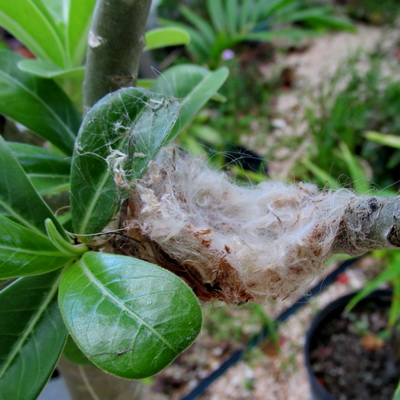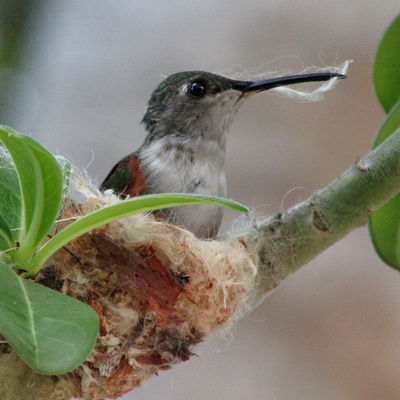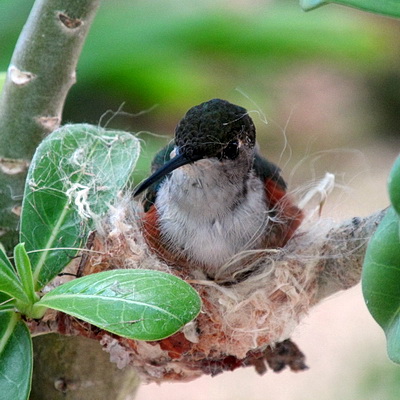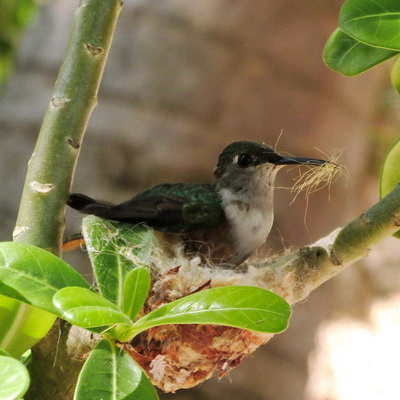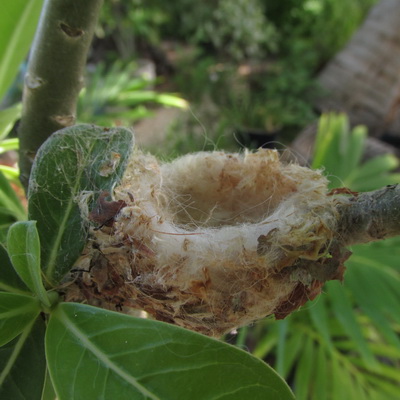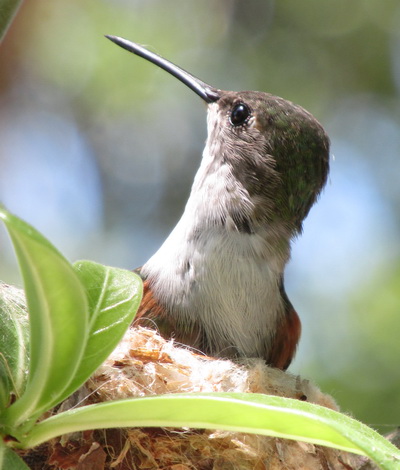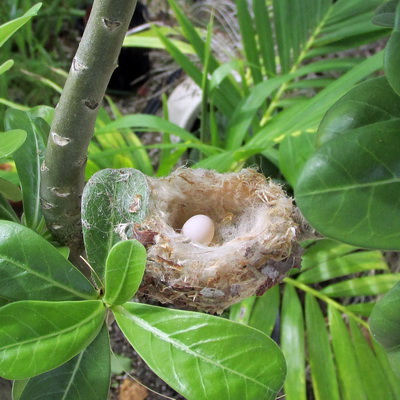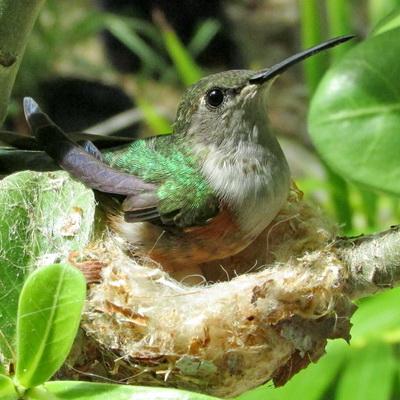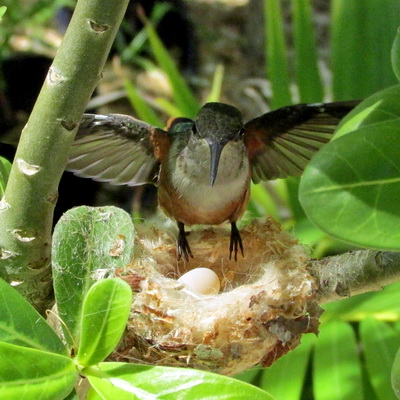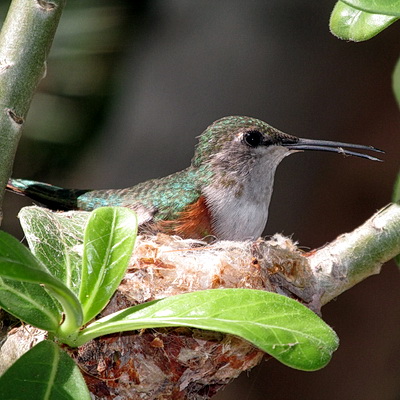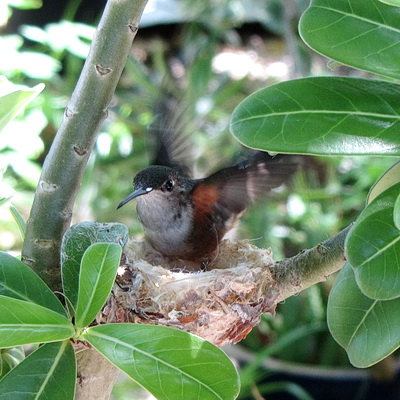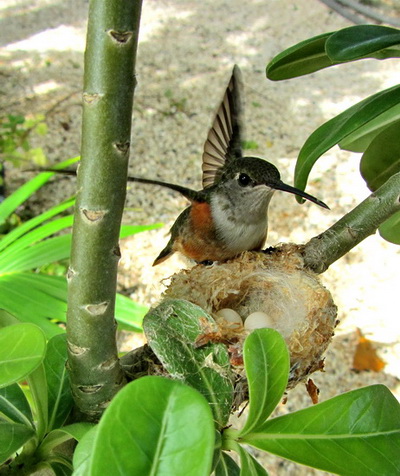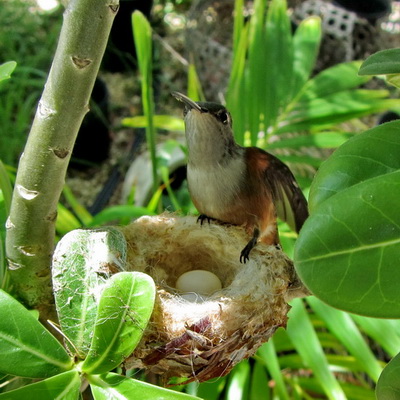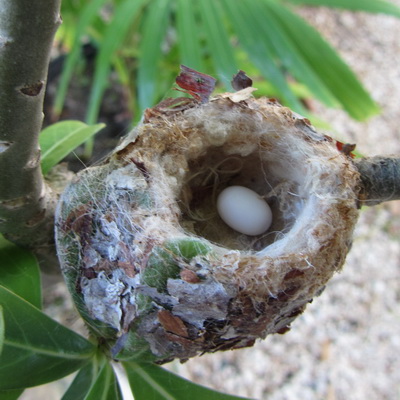
Two little eggs were laid but only one left……….perhaps taken by one of our critters like a pygmy boa.
Unfortunately, one day when I looked in the nest, only one egg remained. I asked around and found out that it could have been a snake that made off with the egg. In any case about two weeks after the eggs were laid, a baby hummingbird hatched.
The mother hummingbird disposes of the broken egg shells after the babies are hatched. When the baby hummingbirds hatch, they have no feathers and dark skin and they are hatched with their eyes are closed.
The mother hummingbird drinks nectar and eats tiny bugs. she then will regurgitate the slurry substance that her baby can easily digest. She flies in every 20 minutes or so to feed this mixture to the baby hummingbirds. Of course there are usually two babies to feed so she’s kept very busy.
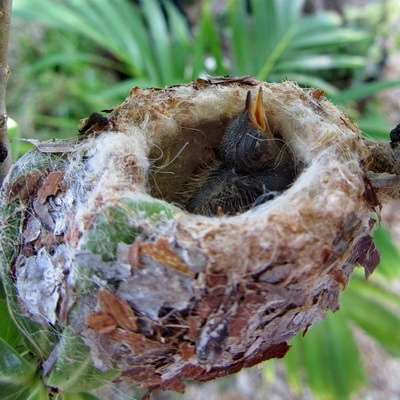
When the baby hears the whirring of the Momma’s wings, it pops up and opens its beak ready for feedings
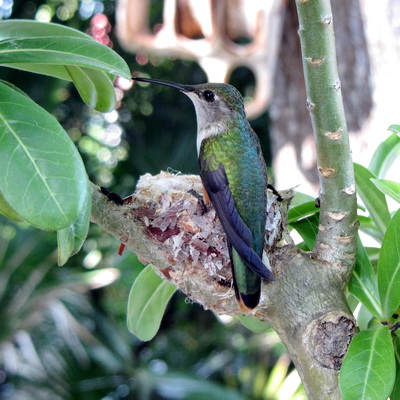
When the baby hummingbirds are first born, the mother hummingbird will spend most of her time sitting on the nest, keeping the baby hummingbirds warm.
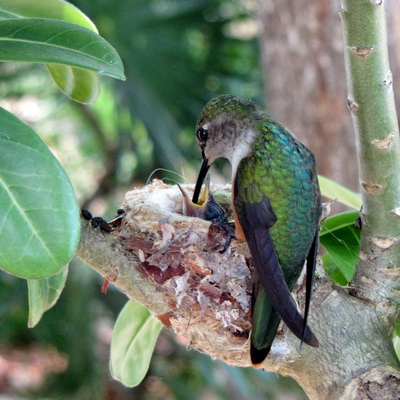
The baby hummingbirds will feel the wind from the wing of their mother and lift their little heads up and open their mouths.
The mother hummingbird puts her beak all the way down into the mouths of the baby hummingbirds while dropping a little of the regurgitated insects and nectar inside.

Big commotion and twittering as the momma hummingbird chases off a curly tail lizard……she fans out her tail feathers as a warning.
More to come as the baby starts moving around more and grows large enough to fill up the nest.
Marta
http://www.harbourclubvillas.com

